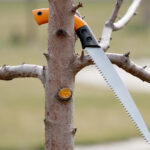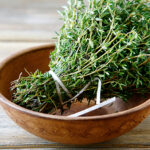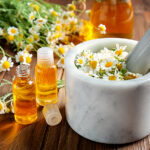Plant ‘Em if You Got ‘Em
Once the soil can be worked, you can start growing plants that don’t mind a bit of a chill. Sweet Peas are an early season go-to for their perfumed blooms and twining vines. Check for tips and tricks for seeding timing and planting to be successful. In cooler regions, you may need to start seeds indoors. Just don’t wait too long, Sweet Peas do not like warm growing conditions. (Take note that these are different from the peas you grow in your veggie garden and are toxic if eaten.) Plant other cold weather beauties to complement your climbing Sweet Peas like Dianthus, Calendula, Pansy, or Alyssum.
Also, think greens
Salad staples such as spinach, lettuce, and kale don’t mind the cooler months offering a fresh array of greens right at your fingertips. Planting vegetables in late winter will give you a fresh home harvest as you wait for spring planting season to arrive. As with most gardening ventures, planning ahead is your best bet for a bountiful growing season. Consider the time needed to get your winter crops planted and growing so that they reach full maturity before temperatures begin to rise and cause bolting. If you have limited time, consider faster growing crops like radishes, salad greens, beets (beet greens and roots) or swiss chard.
Prune Trees and Shrubs
February is a great month for pruning your deciduous trees and shrubs. Winter ensures the plant is dormant and will continue to “rest” until temperatures rise, saving its energy for a surge of growth in spring. You can prune to maintain a certain shape or size, remove dead, damaged and diseased branches or to encourage growth once spring begins! Winter pruning also gives you the advantage of seeing the form of the plant without leaves on the branches. Look for annoying suckers, unruly crisscrossing stems or crowded spaces that need to be opened up to allow for more light or air circulation. A word of caution; know what plant you’re pruning and if it benefits from a winter trim before making the first cut.
Learn more Check Your Feeders
If you’ve been feeding the birds this winter, your feeders and baths may need some TLC. Check the feeders for necessary repairs or cleaning to keep them in top shape. Provide a fresh water source for wildlife too. The birds will appreciate it. Many birdbaths come with a heater to prevent the water from freezing. If you prefer a simpler approach, just keep an eye on the water and replenish it occasionally with fresh water. Once spring hits, you can replace the heater with a new feature like a solar powered fountain!
Keep it Clean
Scope out your beds, landscape and lawn for repairs or clean up that you can do now. Be on the lookout for any stray weeds that may have snuck in while you were inside. Remove any debris such as fallen branches or gravel that was misplaced during snow removal. Inspect your edging for pieces that may have been disrupted by freezing and thawing. Refine any established cut edges if the ground can be worked with your edging tool of choice.












